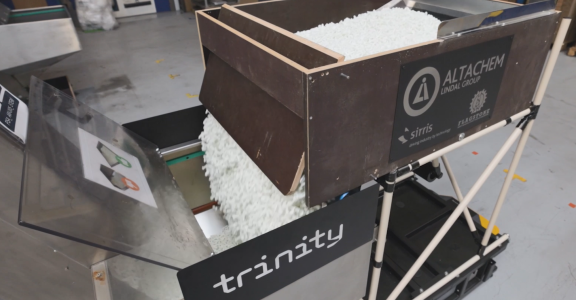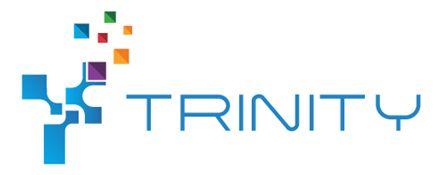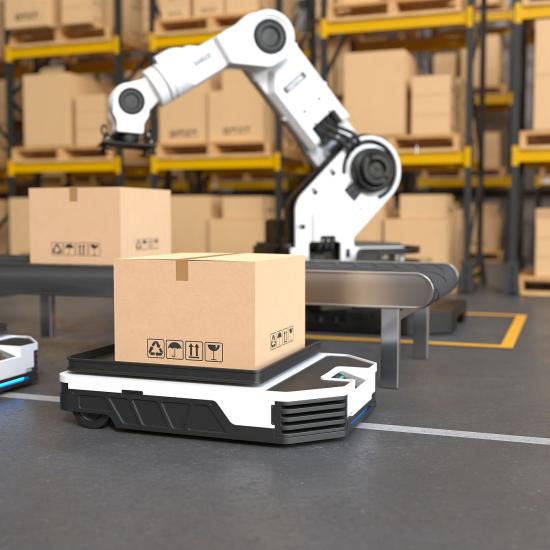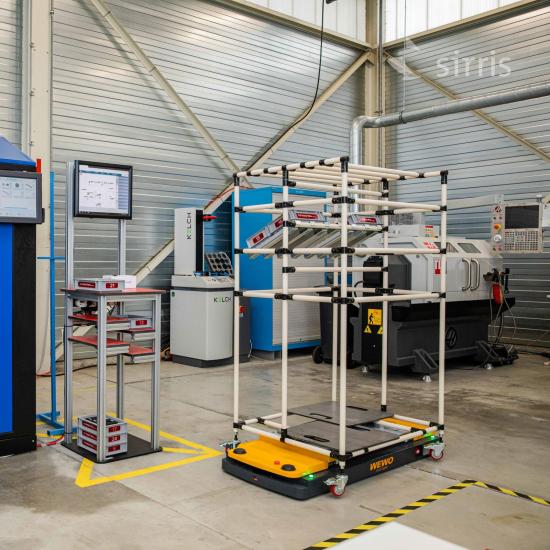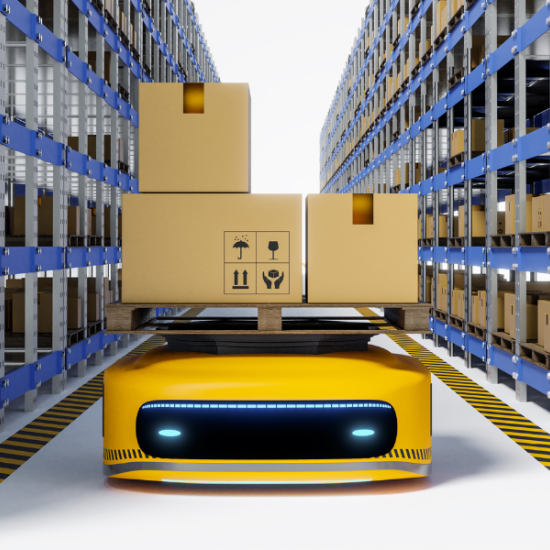After a successful test phase in the Sirris lab, it was time to release the AMRs and AGVs into a real production environment. This happened recently at project partner Altachem in Harelbeke.
The potentials with autonomous mobile robots (AMRs) and automated guided vehicles (AGVs) were tested and demonstrated within the Trinity project, which focuses on digital technologies and advanced robotics for manoeuvrable production. After a first demo in the lab of Sirris in Diepenbeek, the set-up moved to project partner Altachem, where a second demo could take place in a real production environment, as a conclusion of the project. More information can be found in a previous blog about the demos and a blog about the setup of the project.
This demo took place on 30 September 2021 in the production hall of Trinity project partner Altachem, world leader in the development, production and marketing of valves, application tools and accessories for pur foam in pressure containers. A MiR200 AMR, an AGV from WEWO Techmotion, and a Mabo Pallet Mover AGV were used to take care of the supply and transport of parts and finished pieces, in order to relieve the operators of various machines.
Motivation for automation
During the demo event, Altachem first explained why it was considering automation for valve assembly: the main reason was to alleviate the acute shortage of operators by automating time-consuming, repetitive tasks, such as walking around with boxes to refill supply bunkers, so that the operators can focus on their value-adding tasks, such as quality control.
The company also wanted to make the most efficient use of the limited production space available by ensuring a minimum number of stacks of pallets on the production floor and placing the machines as close together as possible, which also minimised the walking distances for the operators and maximised the use of the available (expensive) tools.
Automation of logistics in production should further ensure that the number of machines can be increased from three to four or more with the same number of operators. In time, the interventions should make further scalability possible.
Demo
At the request of the operator, the Mabo-AGV brings pallets from the warehouse to the prep area, where there are fixed pallet locations for each type of component. For example, there should be no more pallets with boxes at the bunkers of the machines. Using a mobile vacuum lifter, the operator removes the boxes from the pallet and empties them into the container that stands on a tubular construction.
There are two loading bays in the prep area where the WEWO-AGV can pick up a load. Once the bin is filled with components, the AGV leaves for the right bunker of the right machine when the operator fills the bin completely and indicates on the screen that it is ready. At the bunker, a karakuri ejector system automatically opens the bin lid and slides the components into the bunker, without the intervention of an operator. A moveable floor that rises after docking ensures that all parts are removed from the container. After that, the WEWO-AGV drives back to the prepzone to pick up the next load.
Assembled valves are collected in boxes, which are made by a box-folding machine and transported to the machine's input with the help of the MiR. Via a powered roller conveyor with several sections, the empty boxes are transported onto the MiR's roller conveyor in groups of three. The roller conveyor on the MiR deposits the empty boxes on the tube system at the input of the assembly machine.
The filled boxes are brought to the correct height of the roller conveyor on the MiR via a lift system, which then takes them to a roller conveyor for the box sealing machine. Once the full boxes have been taped, they are palletised - still manually for the time being.
Response
The demo event attracted considerable interest from industry and about 70 companies attended the demonstration.
The reactions afterwards also showed that those present were positive about the demo:
"First of all, the demo looked good! In addition, the event was also well organised: flags to find the way, reception area, guided tour etc." (Stijn Lambrechts, Operations Manager LAB Motion Systems)
"You’ve really created something great there! Congratulations." (Steven Devooght)
The full presentation of the Trinity project, including the demos, can be found here:
|
Curious as to what the possibilities of autonomous mobile robots are for the logistics within your production? On 17 March 2022 Sirris is organising the 'Masterclass Production Logistics 4.0 - Meet the AMRs' in Diepenbeek. At this event, we’ll teach you how to automate meaningfully with autonomous mobile robots (AMR)... We'll inspire you and let you discover the possibilities for yourself. |
| This SME demonstration of the TRINITY project has received funding from the European Union’s Horizon 2020 research and innovation programme under grant agreement No 825196 |
